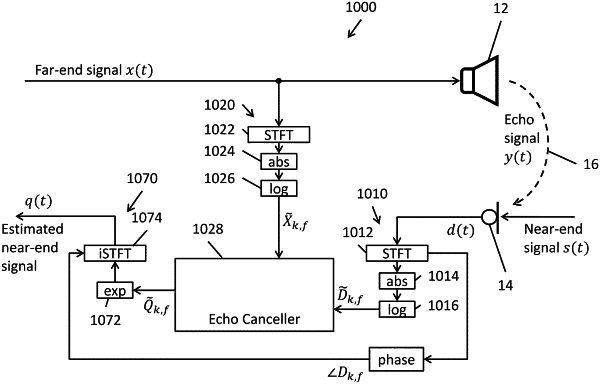| CPC G10L 21/0232 (2013.01) [G06N 3/08 (2013.01); G06N 20/10 (2019.01); H04R 3/04 (2013.01); G10L 2021/02082 (2013.01)] | 20 Claims |

|
1. A system comprising:
a processor; and
memory storing instructions that, when executed by the processor, cause the processor to:
receive a far-end signal and a near-end signal comprising at least an echo signal corresponding to the far-end signal;
generate, by a contextual-attention neural network, a plurality of estimated near-end features based at least in part on the received near-end signal and the received far-end signal, without using an estimated echo signal; and
generate, based on the plurality of estimated near-end features, an estimated near-end signal, the estimated near-end signal corresponding to the near-end signal without the echo signal.
|